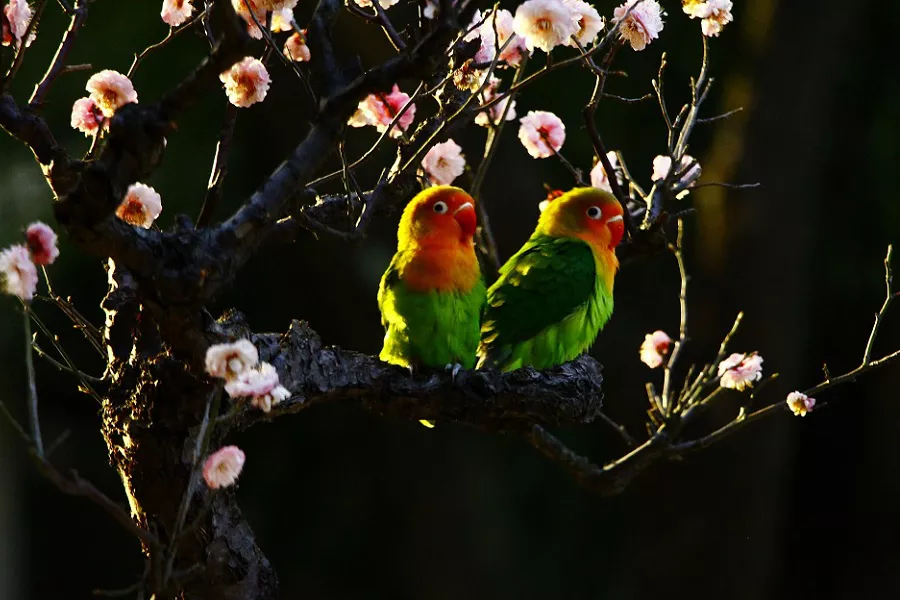Rosy-faced lovebirds (Agapornis roseicollis), also known as peach-faced lovebirds, are small parrots native to arid regions of southwestern Africa. These vibrant and social birds have captivated avian enthusiasts with their striking colors and engaging behavior. One question that often arises among bird enthusiasts is whether rosy-faced lovebirds possess the ability to talk or mimic human speech. This essay aims to explore the vocal communication abilities of rosy-faced lovebirds and provide insights into their linguistic capabilities.
Vocalization in Rosy-faced Lovebirds:
Rosy-faced lovebirds are highly vocal birds, utilizing various vocalizations to communicate with their flock members and express their emotions. Their natural vocal repertoire includes chirps, squawks, screeches, and whistles. These vocalizations serve as means of social bonding, territorial defense, courtship displays, and alarm signals within their native habitats.
Mimicry Abilities:
While some parrot species, such as African grey parrots and Amazon parrots, are renowned for their exceptional ability to mimic human speech, rosy-faced lovebirds are not typically known for their proficiency in this regard. Mimicry abilities vary among parrot species, and rosy-faced lovebirds are not recognized as strong mimics compared to their larger parrot relatives.
Limited Verbal Repertoire:
Rosy-faced lovebirds have a limited ability to imitate sounds and learn vocalizations, including human speech. However, their mimicry capabilities are generally restricted to simple sounds, whistles, or environmental noises, rather than accurately reproducing human words or phrases. While individual variations exist, it is uncommon for rosy-faced lovebirds to develop complex vocal skills akin to larger parrot species.
Natural Vocalizations:
Rosy-faced lovebirds primarily communicate using their natural vocalizations, which consist of a wide range of calls, chatters, and squawks. These vocalizations serve various social functions within their flock, such as maintaining contact, signaling danger, expressing aggression, or establishing territory boundaries. Lovebirds are known to engage in vocal duets and coordinated calls with their mates or flock members, strengthening their social bonds.
Factors Influencing Vocal Learning:
The ability of parrot species to mimic human speech is influenced by various factors, including their brain structure, social environment, and exposure to human vocalizations during early development. Large parrots, such as African grey parrots, possess specialized brain regions associated with vocal learning, facilitating their exceptional mimicry abilities. Rosy-faced lovebirds, on the other hand, lack these specialized brain structures, which may explain their limited verbal repertoire.
Individual Variations:
While rosy-faced lovebirds, as a species, do not possess a strong predisposition for mimicking human speech, individual variations within the population cannot be overlooked. Some lovebirds may display a greater propensity for imitating sounds and picking up certain words or phrases. These individual differences can be influenced by factors such as socialization, exposure to human speech, and genetic predispositions.
Conclusion:
Rosy-faced lovebirds are captivating and sociable parrots with a diverse range of vocalizations. While they possess the ability to learn and imitate simple sounds and whistles, their natural vocal repertoire does not typically include complex mimicry of human speech. While there may be individual exceptions, rosy-faced lovebirds are not commonly regarded as parrot species known for their talking abilities. Bird enthusiasts and pet owners should appreciate these lovebirds for their natural vocalizations and engaging behaviors rather than expecting them to mimic human speech.


 Facebook
Facebook  Instagram
Instagram  Youtube
Youtube 